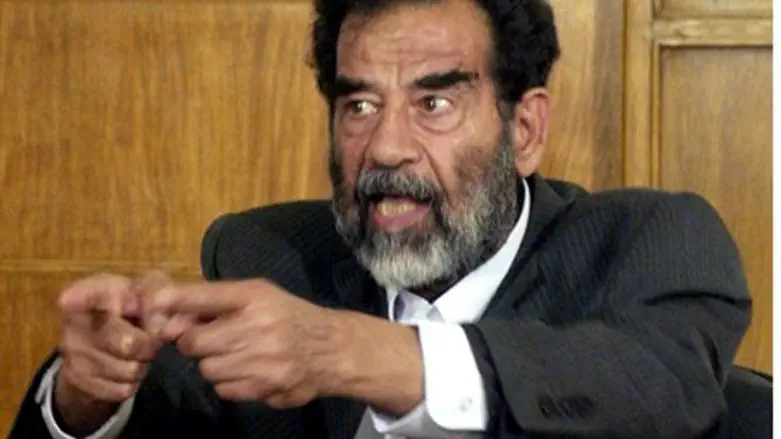
The tomb of Iraq's former dictator Saddam Hussein was virtually leveled in heavy clashes between the Islamic State (ISIS) group and Iraqi forces in a fight for control of the city of Tikrit, The Associated Press (AP) reported on Sunday.
Fighting intensified to the north and south of Saddam Hussein's hometown Sunday as Iraqi security forces vowed to reach the center of Tikrit within 48 hours, the news agency said. AP video from the village of Ouja, just south of Tikrit, shows all that remains of Hussein's once-lavish tomb are the support columns that held up the roof.
As well, poster-sized pictures of Saddam, which once covered the mausoleum, are now nowhere to be seen amid the mountains of concrete rubble. Instead, Shiite militia flags and photos of militia leaders mark the predominantly Sunni village, including that of Maj. Gen. Qassem Soleimani, the powerful Iranian general advising Iraqi Shiite militias on the battlefield.
"This is one of the areas where ISIS militants massed the most because Saddam's grave is here," Captain Yasser Nu'ma, an official with the Shiite militias, was quoted as having said.
"The ISIS militants' set an ambush for us by planting bombs around" the tomb, he added.
The extremist ISIS has controlled Tikrit since June, when it waged its lightning offensive that saw Iraq's second-largest city, Mosul, come under their control. The group was helped in its conquest of northern Iraq by Saddam loyalists, including military veterans, who appealed to Sunnis who felt victimized by Baghdad's Shiite-dominated government.
ISIS claimed in August that Saddam's tomb had been completely destroyed, but local officials said it was just ransacked and burned, but suffered only minor damage, according to AP.
Hussein was captured by U.S. forces in 2003 and was executed by hanging in December 2006 after an Iraqi special tribunal found him guilty of crimes against humanity for the mass killing of Shiites and Kurds. His body has been kept in the mausoleum in his birthplace, Ouja, since 2007.
Iraqi media reported last year that Saddam's body was removed by loyalists amid fears that it would be disturbed in the fighting. The body's location is not known, according to AP.
The battle for Tikrit has intensified in recent days, with the Iraqi army saying on Saturday that commanders were plotting a strategy for flushing out the few remaining ISIS jihadists from the city and estimating it would be liberated within three days.
ISIS has countered every military loss lately by ramping up its propaganda war with ever more shocking acts, including a video of a boy executing a prisoner, and the destruction of priceless archaeological heritage sites.
It has also tried to project the image of a still-growing group, despite the fact that its footprint in Iraq - the home country of ISIS supremo and self-proclaimed caliph Abu Bakr al-Baghdadi - has been shrinking steadily for months.
On Thursday, ISIS spokesman Abu Mohammed al-Adnani announced that a pledge of allegiance by Nigeria's jihadist group Boko Haram had been accepted.
